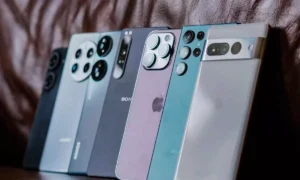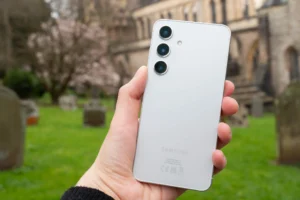Foldable smartphones have come a long way since their inception, evolving from futuristic gadgets to becoming a legitimate segment of the mobile market. In 2024, foldables are expected to take another leap forward, with more refined designs, advanced technology, and better durability. With big players like Samsung, Google, and Huawei already leading the charge, 2024 is shaping up to be a crucial year for foldable devices. Consumers can look forward to improvements in hinges, displays, battery life, and new use cases that go beyond just having a flexible screen. So, what’s next for foldable smartphones? Let’s dive into what 2024 has in store.
Improved Durability and Hinge Mechanisms
One of the major challenges faced by early foldable smartphones was durability, specifically the reliability of the hinge mechanism and the resilience of the flexible displays. In 2024, manufacturers are expected to solve these issues by introducing more durable materials and improved hinge designs. These new hinges will be smoother, allowing for seamless opening and closing without causing visible creases on the display. Additionally, flexible displays will use stronger glass technology, making them less prone to scratches and damage. These advancements will give foldable phones the robustness they need to handle daily wear and tear, bringing them closer to mainstream adoption.
Larger, More Versatile Foldable Displays
Foldable smartphones are about more than just flexibility—they offer larger screen real estate in a portable form. In 2024, we’re likely to see even bigger, more versatile displays. Manufacturers are working on improving screen-to-body ratios, which means thinner bezels and a more immersive experience. The inner foldable screens will continue to grow, making multitasking, gaming, and watching videos more enjoyable. There’s also talk of rollable and stretchable screens, where the display can be extended even further for users who need more workspace. This makes foldables an ideal choice for productivity-focused users, giving them the versatility of a tablet without compromising on portability.
Enhanced Battery Life and Fast Charging
One of the main concerns for foldable smartphone users has been battery life, as the larger displays tend to drain power quickly. In 2024, expect significant improvements in battery technology, allowing foldable devices to last longer on a single charge. Manufacturers are experimenting with more efficient battery designs, possibly dual-cell batteries, to optimize power usage. Fast-charging technology will also take a leap forward, with some foldables expected to support ultra-fast charging speeds of up to 150W. This will allow users to quickly recharge their phones and get back to using their large displays without worrying about running out of power.
5G and AI Integration for Smarter Foldables
Foldable smartphones in 2024 will come with advanced 5G capabilities, allowing for faster download speeds, lower latency, and enhanced connectivity. This will unlock new possibilities for foldable devices, particularly in gaming, video streaming, and augmented reality (AR) applications. In addition to 5G, artificial intelligence (AI) will play a larger role in optimizing foldable smartphone performance. AI-driven software will learn how users interact with their devices and adjust settings accordingly to improve battery life, enhance multitasking, and optimize the overall user experience. This combination of 5G and AI will make foldables smarter and more responsive than ever before.
New Use Cases for Foldable Technology
One of the most exciting aspects of foldable smartphones is their potential for new use cases that go beyond traditional smartphones. In 2024, manufacturers are exploring innovative ways to make foldables more functional. For instance, dual-screen setups can be used for split-screen multitasking, making it easier to work on documents while having a video call or browsing the web simultaneously. Foldables will also enable new modes for gaming, turning the phone into a mini-console with dedicated controls. With more developers optimizing their apps for foldable devices, the range of use cases is set to expand, offering a more immersive and productive experience for users.
Affordability and Wider Adoption
As with any new technology, foldable smartphones initially came with a hefty price tag. However, 2024 is expected to see more affordable foldable options hitting the market, making them accessible to a wider audience. Companies like Xiaomi and Oppo are expected to release foldables with competitive pricing while still offering high-end features. As manufacturing processes become more efficient and the technology matures, we’ll see prices drop, making foldables a viable choice for more consumers. This increased affordability will lead to wider adoption, pushing foldables closer to becoming a standard part of the smartphone market.
Conclusion
Foldable smartphones are on the cusp of a major breakthrough in 2024, with significant improvements in durability, display technology, battery life, and overall functionality. With larger, more versatile displays, smarter AI integration, and the potential for new use cases, foldable devices are set to offer an experience that goes beyond the typical smartphone. As prices become more accessible, foldables will no longer be niche products but mainstream devices that cater to both tech enthusiasts and everyday users. The future of foldable smartphones looks bright, and 2024 will be a defining year for this revolutionary technology.




